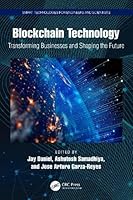
How to Run a SaaS Business: Lessons Learned from a Trio of Billion Dollar Companies
- Length: 80 pages
- Edition: 1
- Language: English
- Publication Date: 2022-10-19
- ISBN-10: B0BJTN4YDX
I’ve been privileged to be a part of the software as a service (SaaS) industry for the majority of my working life. It’s an exciting, innovative and rapidly-growing industry in which to forge a career.
During this time I’ve had the pleasure of working at HubSpot, Indeed.com and Automation Anywhere – three industry leading companies that have created, battled for and ultimately, won their respective categories. The leaders of these companies, Brian Halligan, Dharmesh Shah, Hisayuki Idekoba, Mihir Shuklar and Ankur Kothari are true visionaries and it was a pleasure to play a part in what they built. They saw the potential of SaaS and bet big on it.
So, why did I write a book on running a SaaS business?
Before I get to that, let’s back up a little. Over the past decade, the SaaS industry has come to the fore – Marc Andreessen’s proclamation that “software is eating the world” has been proved well and truly right.
The SaaS business model has certain characteristics that makes it extremely attractive to founders, investors and customers. The key characteristic of SaaS companies is that they operate on a subscription basis – this provides predictable, recurring revenue and makes company performance easy to understand and forecast.
The second characteristic of the SaaS model is rapidly lowering barriers to entry – thanks to Amazon Web Services (AWS), Google Cloud and Microsoft Azure it’s easier, quicker and cheaper than ever before to run a SaaS business.
The final characteristic is scale – mass internet accessibility and adoption hastened the move to the cloud, which, in turn, has provided unprecedented and low cost distribution to SaaS businesses. Software, unlike physical goods has near infinite scale. For example, the labour and material costs required to build and sell 10 software subscriptions is wildly different compared to what it takes to build and sell 10 cars.
This trifecta of characteristics goes a long way to explaining the allure of the SaaS industry, but what first drew me to SaaS, was that the customer is at the heart of the business. It has to be. Indeed, a subscription-based model forces companies to win, and more importantly, continually earn the loyalty of customers. To do this they must put the customer first and provide an outstanding product, service and support.
I also believe that the SaaS business model is more equitable and offers a genuine win-win situation. If companies truly put the customer first, they’ll be richly rewarded and can dramatically increase the lifetime value (LTV) of clients.
HubSpot, Indeed.com and Automation Anywhere are very different businesses with different cultures, products and approaches, but what they have in common is that they won by outfoxing the competition.
Working at these companies while they “blitzscaled” was an exciting, challenging and thrilling journey, and with each passing year I learnt more than I ever thought possible. It gave me a unique perspective that I want to share – that’s why I felt compelled to write How to Run a SaaS Business: Lessons Learned from a Trio of Billion Dollar Companies.
The book contains key lessons on running a SaaS business – it is made up of nine essays which show you how to approach perennial SaaS challenges, such as churn, pricing, sales, marketing, unit economics, NPS, strategy and more.
Lastly, thank you for taking the time to read the book – whether you’re new to the industry or a SaaS veteran, my hope is that you find the lessons insightful and that it helps your company grow, succeed and achieve hypergrowth.

Excel for Finance: Quick Reference Guide: Master Formulas, Functions, and Analysis Techniques






